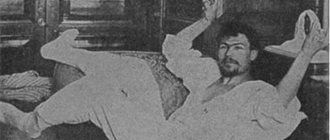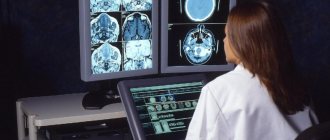A vegetative crisis is an incomprehensible, unpleasant state of anxiety for a person with fear and various somatic manifestations.
The use by specialists of the concepts “vegetative-vascular crisis”, “cardioneurosis”, “vegetative-vascular dystonia with a crisis course” reflects the view of the violation of autonomic abnormalities with an emphasis on the involvement of the vascular system and the heart.
According to the International Classification of Diseases, the deviation is studied within the framework of somatoform autonomic disorder with an emphasis on the mental basis of autonomic dystonia.
The definitions of “panic attack” and “panic disorder” are included in the ICD-10 and are used throughout the world.
Read more about panic attacks in our article.
How to get rid of panic attacks forever - treatment with hypnosis, pills, homeopathy and folk remedies Sudden panic attacks can greatly complicate the lives of their victims. Many people develop depression as a result of such conditions...
About VSD in this material.
How to effectively treat vegetative vascular dystonia - necessary advice and medications for the treatment of VSD VSD is not considered an independent disease, but rather a set of signs - symptoms of other pathological processes. As for the classifications...
Vegetative crisis: symptoms and causes
The cause of panic attacks can be diseases of the endocrine, nervous, and cardiovascular systems. The psychological state of a person and the social situation around him are important. Frequent negative emotional outbursts, depression, and lack of sleep can cause such a deviation. Possible hereditary influence. Lifestyle and bad habits are one of the reasons for the crisis. May be caused by taking certain medications. Most often it occurs at the age of 20-30 years, and also after 65, more typical for women.
General symptoms
According to the classification, there are 4 types of attack, each of which has its own symptoms, but there are also common signs of vegetative crises:
- increased heart rate;
- trembling in the body;
- chills;
- increased sweating;
- feeling of goosebumps;
- darkening of the eyes;
- feeling of tightness or pain in the chest;
- Strong headache;
- convulsive twitching of the arms and legs;
- noise in ears;
- feeling of lack of air;
- feeling of fear, panic.
During a crisis, breathing becomes shallow and rapid, the person does not breathe, but swallows air.
Important! During an attack, a person experiences excessive irritability due to an imbalance in emotional balance and psychological stress.
Vegetative-vascular crisis: classification
Panic attacks are classified into several types, depending on the severity of their manifestations, as well as accompanying symptoms. Mild crises have a short duration, about 15 minutes, and are accompanied by minor disorders. Moderate severity can lead to fainting and lasts no more than 1 hour. Severe crises last the longest and cause multiple deviations. According to the symptomatic manifestations of panic attacks, there are:
- Vegetative-vestibular.
- Vagoinsular.
- Hyperventilation.
- Sympathetic-adrenaline.
The cause of vegetative-vestibular crises may be osteochondrosis of the cervical spine. Accompanied by a decrease in blood pressure, dizziness, and impaired coordination of movement. Possible vomiting. Vagoinsular crisis is associated with disturbances in the production of pancreatic hormones. Accompanied by disorders of the digestive system, sweating, a feeling of suffocation, and heart rhythm disturbances.
The hyperventilation type is manifested by disturbances in the respiratory system, muscle spasms, chest pain, nausea and bloating. The sympathetic-adrenoline type is accompanied by vasospasm, headache, and unpleasant sensations in the eyeball. Possible increase in body temperature and pressure. A panicky fear of death arises.
How long does the VSD crisis last?
The frequency and nature of clinical manifestations of vegetative-vascular dystonia occur differently for each patient, and the complexity of the disease depends on these factors. Therefore, doctors highlight:
- mild attacks;
- attacks of moderate severity;
- heavy.
Mild attacks of the disease usually last no more than 15 minutes and are accompanied by a small range of clinical symptoms. In this case, most often one organ system is involved. There is no post-crisis asthenia, that is, after an attack, a person quickly returns to normal life.
Symptoms of an attack of moderate VSD last less than an hour, but are accompanied by multiple indicators with persistence of post-crisis asthenia for up to a day and a half.
Severe attacks last more than an hour and are accompanied by a vivid clinical picture in combination with tics, convulsions or other hyperkinesis. Post-crisis asthenia persists for several days.
Diagnostics
When diagnosing, the symptoms of a crisis, its duration, as well as factors that can provoke it are taken into account. A blood test for sugar, its biochemistry, as well as a detailed clinical test is required. Diagnostics of the cardiovascular system is needed. For this purpose, echocardiography and ECG, blood pressure measurements are performed.
To exclude neurological abnormalities, heart and brain diseases, and bronchial asthma, magnetic resonance and ultrasound examinations of the head, chest and abdominal region are performed. You will need to consult an endocrinologist, neurologist, cardiologist, or psychiatrist. Based on the diagnostic results, treatment is prescribed to relieve symptoms and eliminate the cause.
Important! To establish a diagnosis and exclude other diseases of neurology, respiratory system, heart, digestion, similar in symptoms, a consultation with a therapist is necessary.
Diagnostic methods
Patients seek medical help when the attack has subsided and the vegetative crisis is at rest. A neurologist or psychotherapist must collect all the data about the disease, find out the frequency and nature of attacks, identify the presence of chronic abnormalities in the functioning of the central nervous system, the thyroid gland, various psycho-emotional imbalances and somatic disorders. The patient is identified with all the signs that accompany the attack and those that occur after it, the duration of panic attacks, which provokes such manifestations.
First, the doctor excludes a number of diseases, and only after that confirms the presence of a vegetative-vascular crisis and prescribes treatment. A number of diseases with similar manifestations that need to be excluded during diagnosis:
- bronchial asthma;
- brain tumor, epileptic seizures;
- disturbances in the functioning of the heart, muscle ischemia;
- depressive disorders;
- schizophrenia.
Treatment and prevention
To eliminate the deviation, drug and non-drug therapy will be required. The first includes taking antidepressants and sedatives. Tranquilizers may be required. Therapy is aimed at eliminating symptoms and normalizing the functioning of organ systems. Non-drug treatment includes massage, breathing exercises, therapeutic exercises, and psychotherapy.
Medicines
Herbal preparations are effective as sedatives: infusions of valerian, motherwort, peony, mint. It is possible to take bromine-containing drugs. Timely administration of sedatives at the beginning of a crisis with a mild course can stop it. Ammitriptyline, Clomipramine, Remeron, Effexor, and other drugs are prescribed as antidepressants. Necessary for normalizing brain function to alleviate depressive conditions.
Nootropic drugs are prescribed to increase the body's resistance to physical and emotional stress and normalize sleep. Among them are Phenibut, Piracetam, Phezam, Noopept, etc. Tranquilizers are prescribed to treat severe forms of vegetative crisis. They have sedative, anticonvulsant properties and promote muscle relaxation. Phenazepam, Afobazol, Nozepam are used as such agents.
Important! Tranquilizer therapy is carried out strictly as prescribed by the doctor. The drugs have serious side effects and are addictive to the body.
Prevention
You can avoid panic attacks by following a healthy lifestyle. Regular moderate physical activity is required. Swimming, running, yoga, long walks in the fresh air are useful. The diet should include foods rich in vitamins and minerals, and it is important to drink enough water. A complete cessation of bad habits is required.
The daily routine should be adjusted. A full night's sleep is necessary, daytime sleep is also recommended, and adherence to a diet. It is important to be able to control your psycho-emotional state, suppress aggression, panic, and avoid conflict situations. Consultation with a psychologist is necessary.
A vegetative crisis worsens a person’s quality of life and also threatens his health. During an attack, the load on organs increases, primarily the heart, brain, and lungs. The condition requires diagnosis and comprehensive treatment. A healthy lifestyle, sports, walks in the fresh air, a balanced diet - the prevention of such conditions.
Symptoms
Symptoms mainly appear in people after 30 years of age, but there are also early cases of manifestation - in adolescence during hormonal changes in the body.
In most cases, a vegetative crisis manifests itself in the form of disorders of the body’s life support systems, less often – psycho-emotional disorders and central nervous system disorders.
Neurotic vegetative crises are characterized by the following manifestations:
- severe and bursting headaches, migraines;
- sensation of pulsation in the cerebral cortex;
- pale face, dry skin;
- increased heart rate;
- changes in body temperature, chills, fever;
- tremor of the limbs, numbness, slight trembling;
- anxious feelings, fear, unreasonable worry;
- increased blood glucose levels;
- frequent urge to urinate.
After the occurrence of asthenic syndrome, i.e. chronic fatigue, mental weakness, the following signs appear, which can be characterized by:
- feeling of suffocation, inability to breathe in deeply;
- disruptions in the functioning of the heart, its fading;
- clouding of consciousness, dizziness;
- discomfort in the stomach, bloating, gas formation;
- rare pulse.
Vegetative crisis of any type is different, but all of them are characterized by fear and attacks of anxiety and panic. Mental disorders may appear, which are manifested by depersonalization, loss of reason, obsessions, fear of death or fear of harming someone.
An atypical attack of vegetative-vascular crisis can be expressed by the following symptoms:
- weakness in the limbs, inability to control them;
- feeling of a “lump” in the throat, problems with swallowing;
- hearing and vision impairments;
- slurred speech;
- impaired motor skills, loss of coordination;
- convulsive manifestations;
- loss of consciousness;
- nausea, vomiting.
A crisis can give rise to the following conditions:
- stress or neurotic disorders: the easiest to treat;
- consequences of hereditary injuries, concussions, residual disorders of the main nervous system;
- constant irritation of peripheral vegetative structures;
- endocrine changes in the body (for example, during sexual maturation), pathologies of the working process of the endocrine glands;
- taking medications (for example, Erespal).
What is a vegetative crisis? The source of its progress is dysregulation in the ANS. This condition is provoked by:
- infections that cause changes in the central nervous system;
- age-related hormonal changes;
- endocrine disorders;
- diseases of the central nervous system.
The provocateur of infections is often osteochondrosis or an inflammatory process. The main causes of dysfunction of the central nervous system include birth injuries and concussion.
The first attack of VSD often occurs against the background of physical or mental fatigue, stress, and the use of certain medications.
Vegetative crisis usually occurs in expectant mothers, as well as in women during menopause.
Various factors can provoke the occurrence of a VSD crisis. For some, the main reason is intolerance to stuffiness, for others it is a change in weather or a trip on public transport.
Excluding provoking situations, correct assessment of the situation, and planning actions will allow you to minimize the number of possible attacks. The main thing here is to clearly understand what causes them.
Regardless of how often such conditions occur, the patient should always have mild sedatives with him. At any hint of a stressful situation and the onset of a crisis, it is better to play it safe. The use of such remedies helps to avoid panic attacks, normalize blood pressure and alleviate the general condition during exacerbation.
When an attack of vegetative-vascular dystonia has already begun, treatment with mild sedatives will no longer help. It doesn't matter where or in what time period it happened. You need to lie down or sit down and try to cope with the emotions that arise. Need a distraction. Be sure to inhale deeply through your nose, while you can count the number of inhalations or exhalations, and drink water in small sips. The main thing is to remember that this is just a panic attack that will end soon.
A massage of closed eyes will help to cope with a strong heartbeat, and a massage of the little fingers, temples and the back of the head will help normalize the jump in blood pressure. Taking appropriate medications will help reduce blood pressure.
If there is a feeling of lack of air, then you should open the window and free the neck area from tight clothing.
If a headache occurs, you should move away from sources of bright light and noise. In case of an acute attack, a Phenazepam tablet will help. An unexpected attack of weakness will disappear if you eat something sweet.
How does an attack go?
An attack of vegetative-vascular dystonia can occur in different ways. This depends on the severity of the autonomic disorder in a particular patient.
The following factors can cause an exacerbation of pathology:
- stress;
- emotional and physical stress;
- lack of sleep;
- exacerbation of chronic diseases;
- injuries of the skull and spinal column.
A mild attack is characterized by one or two symptoms and passes quickly. So, during an attack, only tachycardia, shortness of breath or chills can be observed. A vagoinsular attack can only be accompanied by a decrease in blood pressure.
How long the crisis lasts and the frequency of attacks depends on the patient’s lifestyle. If you follow a normal work and rest schedule, as well as a balanced diet and the absence of bad habits, an attack of VSD is rare.










